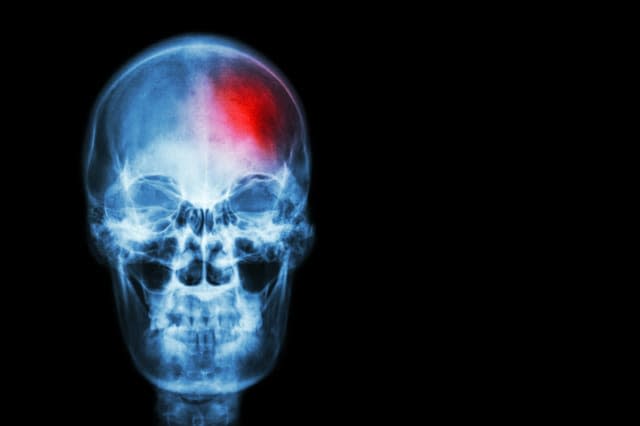Subtle signs you're having a stroke

Stroke occurs approximately 152,000 times a year in the UK; that's one every three minutes and 27 seconds, leading to an estimated 67,000 deaths. In addition, at least 46,000 people have a mini-stroke (or TIAs – transient ischaemic attack) each year.
See also: How to prevent a stroke
See also: Good night's sleep and regular exercise reduces stroke risk
You may not know you're having a stroke
A stroke is sudden and shocking, and many people don't recognise their symptoms of being that of a stroke, or don't realise how serious they are. While there are classic signs to watch for (see below), no two strokes are the same, and women in particular can experience more subtle signs of stroke that are easy to overlook or dismiss as something else.
When a stroke affects the brain's breathing centre, for example, it can trigger a sudden, protracted case of hiccups, more commonly in women.
As your chances of recovery depend on receiving swift medical treatment, you should call 999 immediately or have someone take you to the hospital. Even if you experience the symptoms below for just a short time, you should seek help.
Classic symptoms of stroke
The more well-known signs of a stroke include:
- Sudden numbness or weakness of the face, arm or leg, especially on one side of the body
- Confusion or trouble speaking or understanding what others are saying
- Double vision or blurred vision in one or both eyes
- Sudden trouble walking, dizziness, loss of balance or coordination
- Sudden severe headache with no known cause. The NHS website describes "a sudden and very severe headache resulting in a blinding pain unlike anything experienced before".
Spotting the signs FAST
The main symptoms can be remembered with the word FAST: Face-Arms-Speech-Time.
• Face – Can the person smile? Has their mouth or an eye drooped?
• Arms – Can they raise both arms and keep them there? Do they feel numbness in one arm?
• Speech – Is their speech slurred or garbled? Are they unable to talk, despite being awake?
• Time – It is time to dial 999 immediately if you see any of these signs.
Less frequent symptoms
Women in particular can experience less common signs of stroke. These can include:
- Difficulty swallowing (which may or may not manifest as drooling or face weakness)
- Sudden hiccups
- A sudden headache that leaves you feeling drained
- Nausea and vomiting
- Shortness of breath and chest pain
- Sudden face or limb pain
- Brief loss of consciousness, fainting, or convulsions
- Complete paralysis of one side of the body
Don't ignore a TIA
A transient ischeamic attack or TIA (also known as a mini stroke) is caused by a temporary disruption in the blood supply to part of the brain, normally as a result of a blood clot. The lack of oxygen can cause symptoms similar to those of a stroke, such as speech and visual disturbance, and numbness or weakness in the face, arms and legs.
The main difference between them is that a TIA is temporary – with symptoms usually lasting from a few minutes up to 24 hours.
In the early stages of a TIA, you won't be able to tell whether you are having a mini-stroke or a full stroke, so it's important to phone 999 immediately and ask for an ambulance. Research shows that not getting treatment for a TIA increases your risk of having a life-threatening stroke in the near future.
A TIA is serious and should not be ignored. Even if the symptoms disappear before you reach hospital, an assessment should still be carried out.



